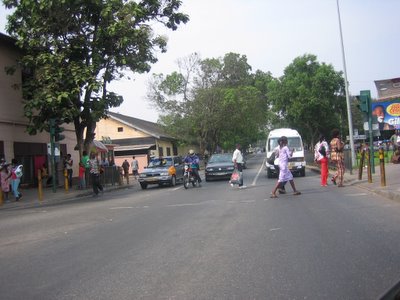Gender-Specific Indicators of ICT Use
I came across these presentations on
gender-specific data on Information and Communication Technology (ICT) use from one of the many women and technology themed mailing lists I belong to. These provide some meat to the article I linked to, a week or so ago,
about differences in the way men and women use the Internet.
The presentations are a result of two ongoing studies by
Orbicom and Regentic (
IDRC) to collect and assess existing sex-disaggregated data on women's participation in the information society at the international level.
The first one, by Heidi Ertl and Heather Dryburgh of Statistics Canada, examines the evidence in a range of EU, OECD and developing countries. Some of the evidence so far seems to say that:
- Where a digital divide does exist, gender differences in ICT access and use still exist. However, in countries where ICT use is generally very low, differences in men and women's use and access is neglible.
- Men and women do use ICTs diferently. Women's use of the Internet tends to be "less frequent and less intense" than mens'. Women also use the Internet for a less diverse range of activities than men. In school, however, where access is presumably the same, girls use the Internet as much as men.
- This idea of access playing a somewhat significant role in Internet use is highlighted in a look at 12 EU countries, where they found that women who work or are in school (again, presumably where access is not an issue), reach parity with men in terms of Internet use more than women who solely rely on access at home or at an Internet cafe.
- Issues to look at when examining the gender divide include literacy rates of men and women; whether women ar equal partners in technology development and governance; the numbers of female graduates of science and technology programs (this tends to be low in both developed and developing countries); and under-representation in ICT employment.
The second presentation, by Sophia Huyer and Nancy Hafkin of WIGSAT, asks key questions in how socio-cultural customs, infrastructural and access barriers restrict women from acessing and using ICTs; whether women have the relevant educational and training to function in the Information Society; the severity of gender disparities in ICT employment; and if there are gendered differences in access and control of financial resources which can affect participation in the Information Society.
Both presentations illustrated, to varying degrees, how gender disparity in access and use of ICT is
still an issue that needs to be seriously examined. If evidence shows that access to technology continues to be a problem for many women, then we need to think about how various tools can be made more available for them. Same goes for the other barriers to use.
I was at work today and as usual we had no electricity, but I was able to send text messages to friends and family using my cellphone. At that moment, I was incredibly relieved that in this country where lack of electricity is such a big issue, I have a way of keeping connected. There are obviously cost and training issues involved with cellphone use, but so much less than access to the Internet. I know the proclamation of the cellphone as "the next big thing" in closing the digital divide of developing countries is probably so passe by now, but now that I am living in a developing country again after so long, I realise the value of my innocuous looking mobile phone.






